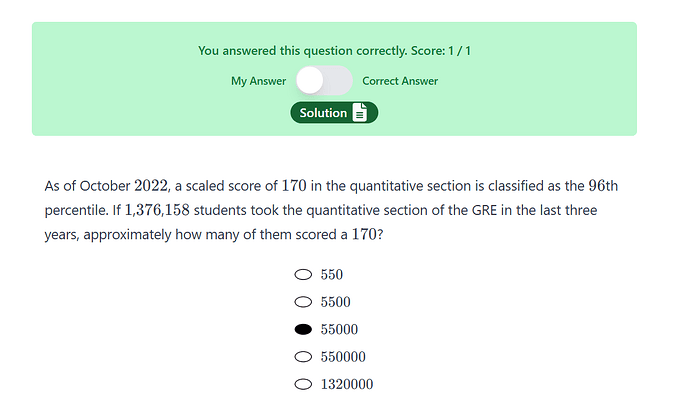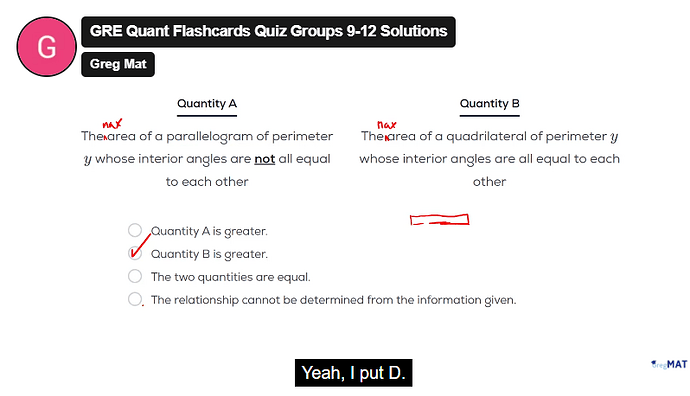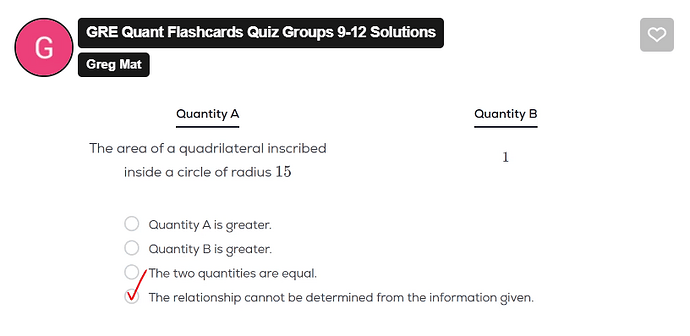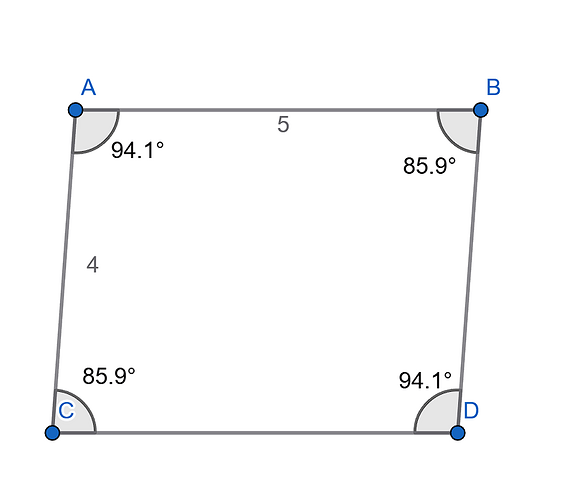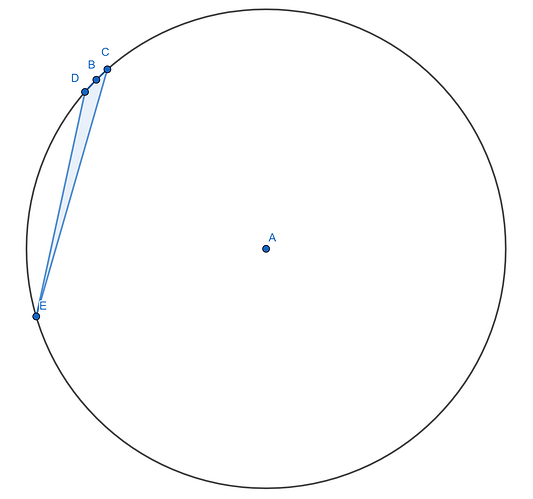Hi,
-
I first divided the total number of students by 100 to determine how many students are in each percentile. Since 170 is the highest score and the 96th percentile is mentioned, I assumed it covers the range from the 96th to the 99th percentile. I multiplied the number of students per percentile by 3 or 4 to estimate, and the closest result was 55,000. Is my approach correct?
-
Why did Greg say the word “regular” caused a problem here? What would the correct approach have been? If the word “regular” wasn’t included, the minimum wouldn’t necessarily be an equilateral triangle. So, how would we calculate the minimum in that case?
-
Why was it necessary to include the word “max”? What interpretation could have been made without “max” that would have made option D correct (Greg mentioned it)?
-
How can a quadrilateral inscribed in a circle with a radius of 15 have an area less than 1? No matter how I calculate it, considering the circle’s radius of 15, the quadrilateral’s area should definitely be greater than 1.
